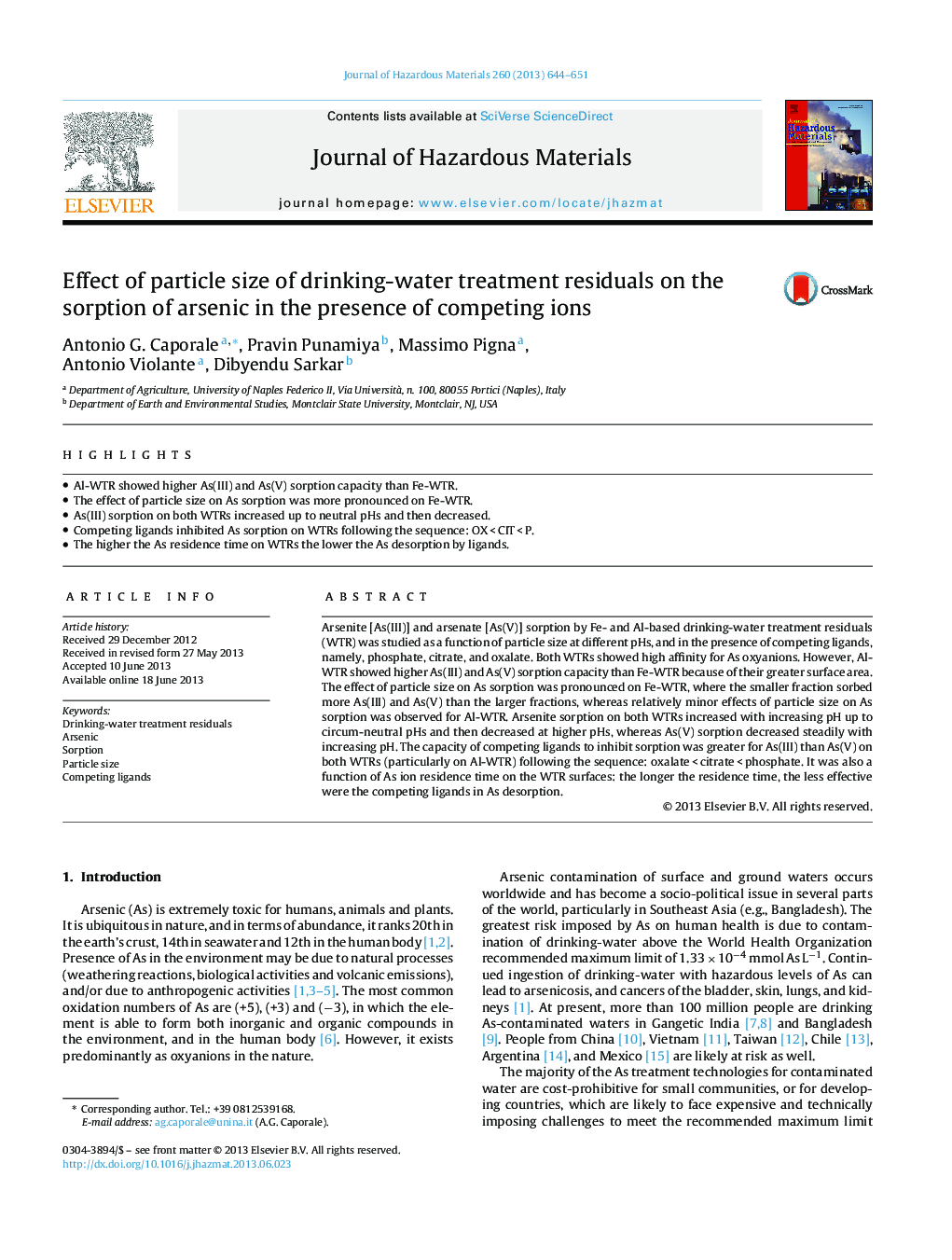| Article ID | Journal | Published Year | Pages | File Type |
|---|---|---|---|---|
| 6972428 | Journal of Hazardous Materials | 2013 | 8 Pages |
Abstract
Arsenite [As(III)] and arsenate [As(V)] sorption by Fe- and Al-based drinking-water treatment residuals (WTR) was studied as a function of particle size at different pHs, and in the presence of competing ligands, namely, phosphate, citrate, and oxalate. Both WTRs showed high affinity for As oxyanions. However, Al-WTR showed higher As(III) and As(V) sorption capacity than Fe-WTR because of their greater surface area. The effect of particle size on As sorption was pronounced on Fe-WTR, where the smaller fraction sorbed more As(III) and As(V) than the larger fractions, whereas relatively minor effects of particle size on As sorption was observed for Al-WTR. Arsenite sorption on both WTRs increased with increasing pH up to circum-neutral pHs and then decreased at higher pHs, whereas As(V) sorption decreased steadily with increasing pH. The capacity of competing ligands to inhibit sorption was greater for As(III) than As(V) on both WTRs (particularly on Al-WTR) following the sequence: oxalate < citrate < phosphate. It was also a function of As ion residence time on the WTR surfaces: the longer the residence time, the less effective were the competing ligands in As desorption.
Keywords
Related Topics
Physical Sciences and Engineering
Chemical Engineering
Chemical Health and Safety
Authors
Antonio G. Caporale, Pravin Punamiya, Massimo Pigna, Antonio Violante, Dibyendu Sarkar,
